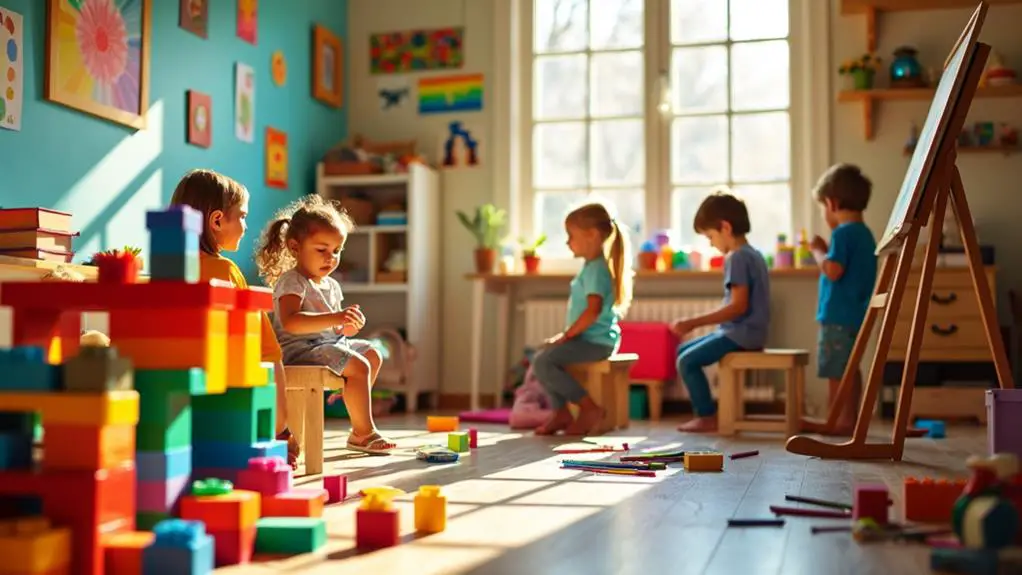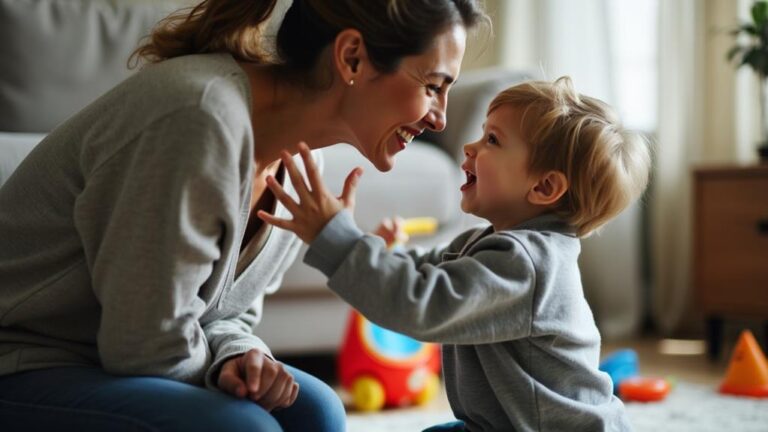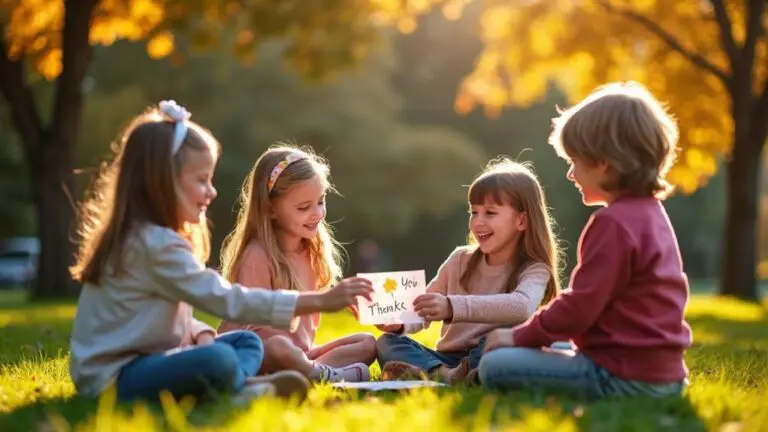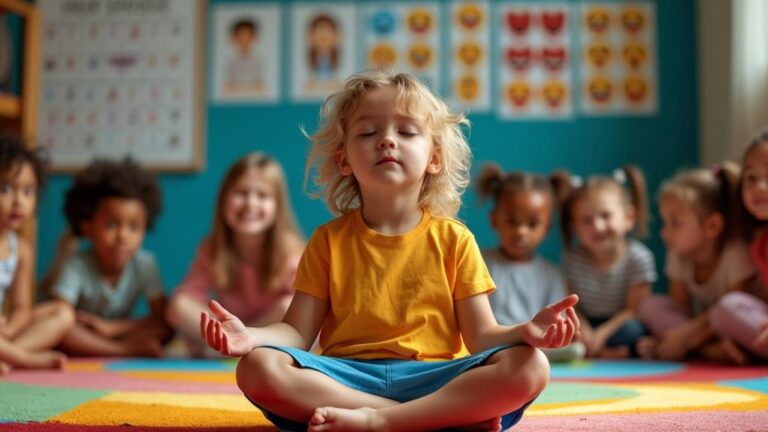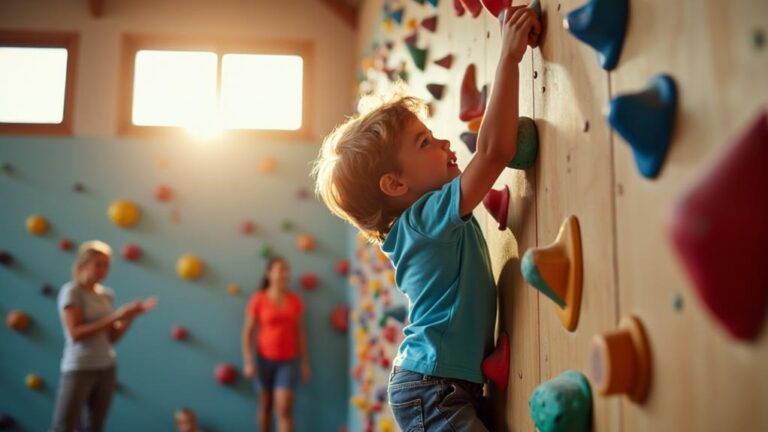Nurturing Creativity in Children
I've always been fascinated by the boundless imagination of children and how it can be nurtured to foster lifelong creativity. As someone who's studied child development, I've seen firsthand the impact of a supportive environment on a child's creative growth. But it's not just about providing art supplies or scheduling "creative time." There's a delicate balance between guidance and freedom that can make all the difference. In my experience, the most effective approaches often challenge our adult assumptions about creativity. So, what are the key ingredients for nurturing a child's creative spirit, and how can we as adults avoid stifling it unintentionally?
Key Takeaways
- Provide open-ended materials and designated spaces to spark imagination and encourage free expression.
- Allow unstructured time for exploration and play to foster independent problem-solving and creative thinking.
- Encourage risk-taking and view mistakes as learning opportunities to build resilience and confidence.
- Incorporate diverse resources like art supplies, music, and storytelling to enhance imaginative play and skill development.
- Create a supportive environment that values unique ideas and promotes collaborative projects to nurture creativity.
Fostering a Creative Environment
To foster a creative environment for children, it's crucial to provide open-ended materials that spark their imagination and curiosity.
I've found that designating a specific space for arts and crafts encourages children to express themselves freely and boosts their confidence. By offering diverse resources like art supplies and building materials, I allow kids to explore and engage in imaginative play.
I've noticed that reducing screen time in favor of unstructured playtime enhances independent thinking and problem-solving skills. Encouraging outdoor play and nature exploration stimulates curiosity and provides rich contexts for creative projects.
I make sure to include a variety of open-ended materials that challenge children's thinking, promoting exploration and fostering their innate creativity. By creating an environment that supports hands-on activities and free expression, I'm nurturing children's creative potential and helping them develop crucial skills.
Encouraging Exploration and Risk-Taking
Building on the foundation of a creative environment, I've found that encouraging exploration and risk-taking is key to unblocking children's full creative potential. I challenge kids with open-ended questions and materials, fostering problem-solving skills and innovative thinking. In my classroom, mistakes are opportunities for growth, nurturing resilience and adaptability.
| Exploration Method | Benefits |
|---|---|
| Open-ended tasks | Diverse solutions, enhanced problem-solving |
| Collaborative projects | Shared risk-taking, improved social skills |
| Reflection exercises | Deeper understanding, personal growth |
I've seen how this approach transforms children's attitudes towards the creative process. They embrace challenges, persevere through difficulties, and learn from their experiences. By encouraging exploration and risk-taking in a supportive atmosphere, I'm helping children develop the confidence and skills they need to thrive in their creative endeavors.
The Role of Educators

Educators play three essential roles in nurturing children's creativity.
First, we support social and emotional development, which is vital for fostering creativity in early childhood. We create a supportive environment by demonstrating flexibility, playfulness, and humor, encouraging exploration and innovation.
Second, we value children's unique ideas and perspectives, nurturing creativity without dominating their creative process.
We promote independent problem-solving by observing interests and providing thoughtful prompts that cultivate persistence and enhance creative thinking.
Strategies for Creative Development
Implementing effective strategies for creative development is essential in fostering children's imagination and innovative thinking. I've found that incorporating open-ended materials in the classroom challenges children's critical thinking and promotes experimentation.
By providing diverse resources like art supplies and building sets, I encourage imaginative play that enhances cognitive and motor skills. I also allow unstructured time for free exploration, which nurtures independent problem-solving abilities.
To stimulate creativity further, I engage children in storytelling through open-ended questions, promoting language development and unique character creation. Additionally, I've noticed that music and movement activities not only boost creativity but also support social skills and physical coordination.
Conclusion
I've learned that nurturing creativity in children isn't just about art supplies and activities. It's about creating an environment where kids feel safe to explore, take risks, and express themselves freely. As an educator, I play an essential role in fostering this atmosphere. By providing open-ended materials, unstructured time, and encouragement, I'm helping children develop problem-solving skills and confidence. It's amazing to see how this approach reveals their creative potential and shapes their future.

